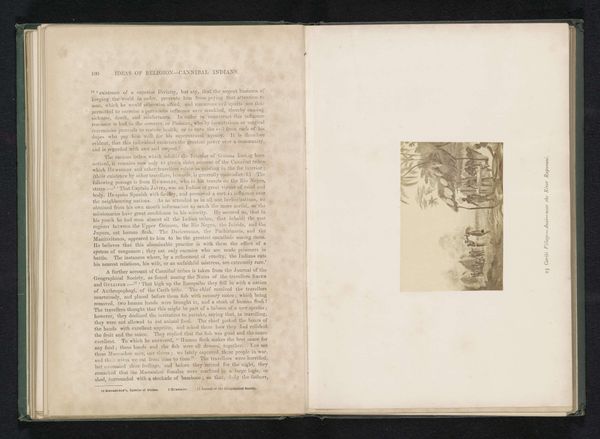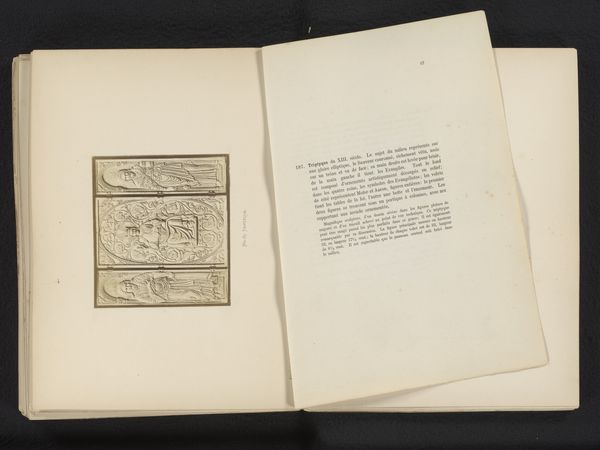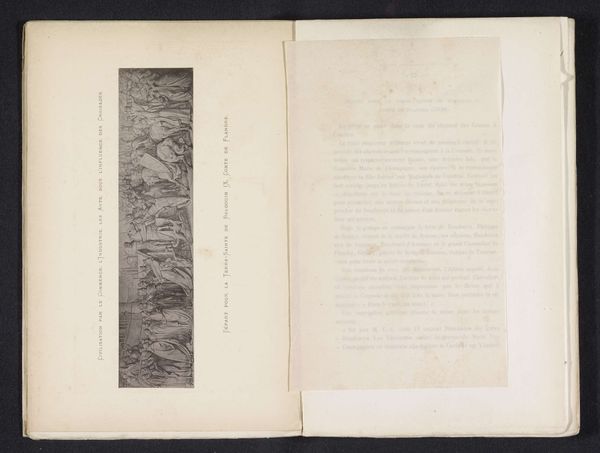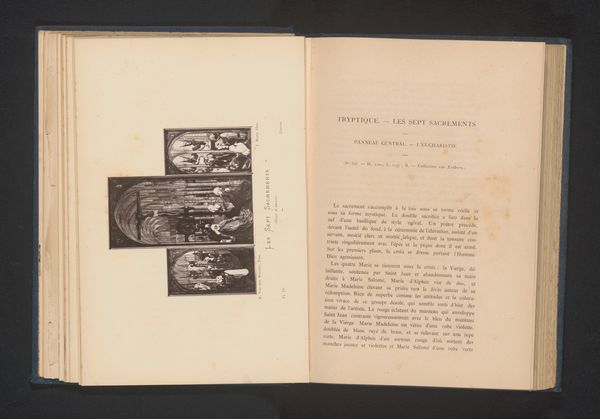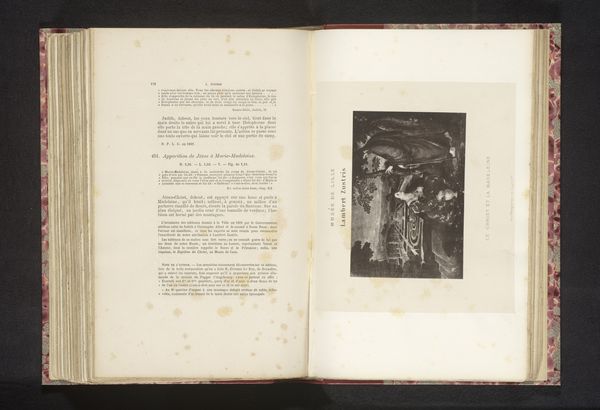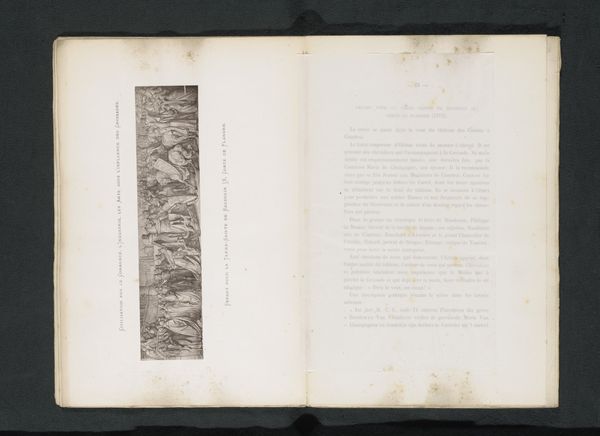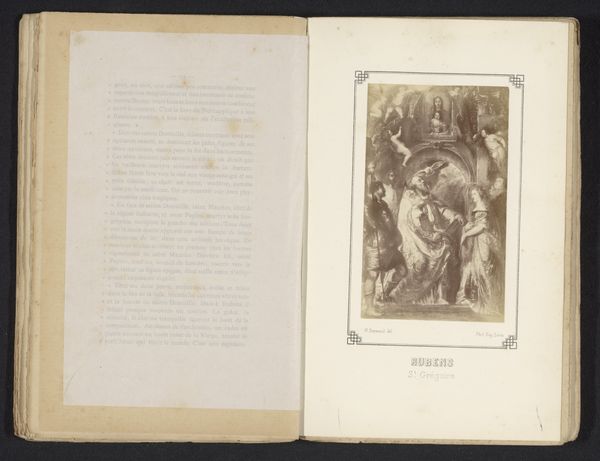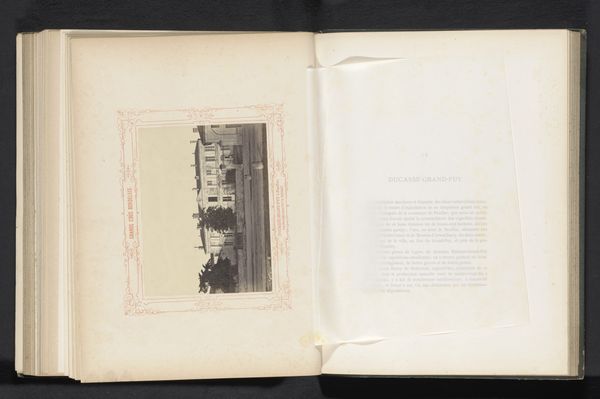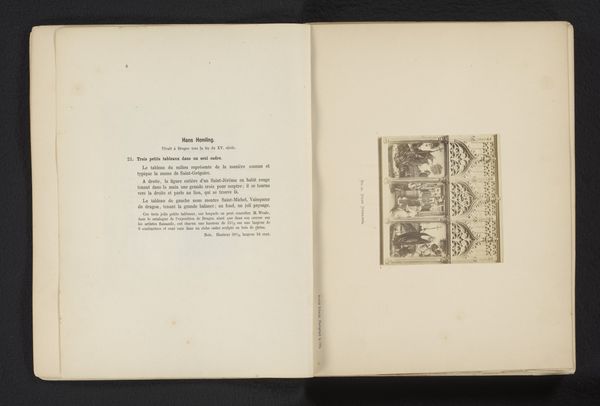
Fotoreproducties van twee tekeningen naar muurschilderingen in de Schepenzaal in het Stadhuis van Kortrijk, voorstellende Diederik van Assenede voor de Maagd van Kortrijk en Siger van Kortrijk before 1876
0:00
0:00
drawing, print, paper, engraving
#
drawing
#
aged paper
#
medieval
# print
#
sketch book
#
hand drawn type
#
paper
#
personal sketchbook
#
hand-drawn typeface
#
thick font
#
sketchbook drawing
#
history-painting
#
handwritten font
#
sketchbook art
#
engraving
#
historical font
Dimensions: height 180 mm, width 275 mm
Copyright: Rijks Museum: Open Domain
Curator: Hmm, initially it gives me this almost sepia-toned sense of age, like uncovering something ancient but also very delicate. A feeling of stepping into a hushed, academic space. Editor: Exactly! What you're seeing here is a page from what appears to be a sketchbook, offering “Fotoreproducties van twee tekeningen naar muurschilderingen in de Schepenzaal in het Stadhuis van Kortrijk, voorstellende Diederik van Assenede voor de Maagd van Kortrijk en Siger van Kortrijk”. Essentially, reproductions of drawings made of mural paintings inside a city hall. These renderings likely predate 1876 and were done by an anonymous artist. Curator: "Fotoreproducties…" That almost feels oxymoronic! The interplay between documenting and creating…it’s so meta! Do you think the original artist aimed for strict accuracy? I wonder about the intent. Are we supposed to see *truth* or artistic interpretation? Editor: I lean toward documentation. Look at the stark contrast in the prints. It almost negates an obvious hand…But then you notice the meticulous lines rendering medieval figures, plus, there's all that rather ornate handwritten script labeling the historical scenes—it certainly betrays some flair of the hand, however measured and subdued. Curator: Good point, good point. I suppose it's meant to educate…and the murals, being historical depictions, feel doubly removed! What era does it harken back to in terms of compositional qualities? Is there something notable in how figures and text interact on this spread? Editor: The formal layout and figure placement carry the torch of Medieval and early Renaissance sensibilities—very flat, frontal poses for important characters—while other figures look to them in support of the heroes, as they might have! The drawings serve a didactic purpose, immortalizing civic virtue through devotion (note Diederik before the Virgin) and through intellectual prowess in the likeness of Siger, likely a key medieval thinker, too. Curator: Makes me ponder… What stories hide within city walls? I imagine these murals stirred intense local pride, linking folks to their ancestors and heritage. Now that it's archived into drawing reproductions inside of a book of some sort—the layers, like parchment, unfold so wonderfully. Editor: Indeed, a humble print can become a portal to deeper meaning and public sentiments. A testament to how even secondary artistic endeavors provide valuable commentary on society.
Comments
No comments
Be the first to comment and join the conversation on the ultimate creative platform.
